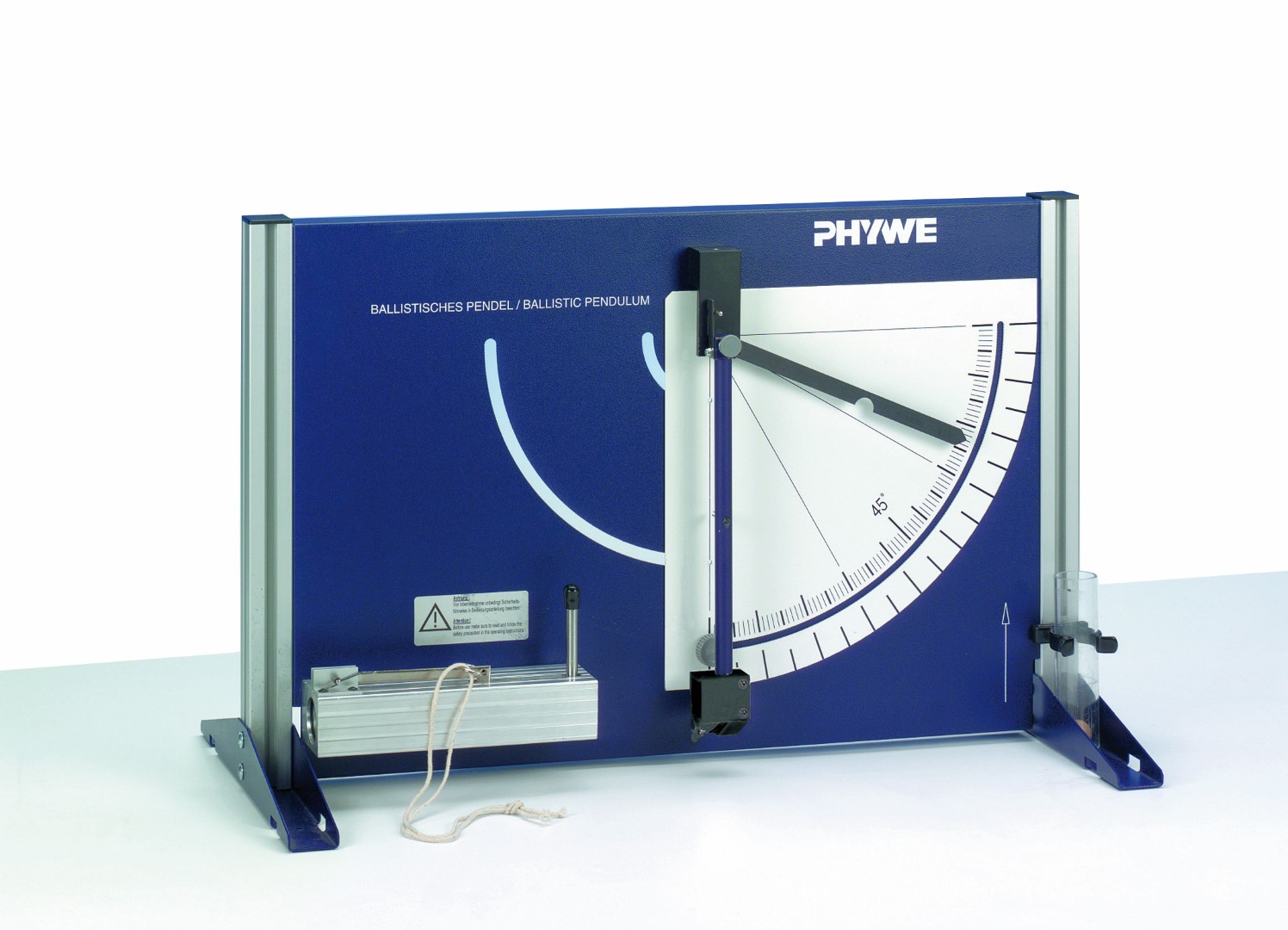Principle
A classic method of determining the velocity of a projectile is to shoot it into a resting mass hung as a pendulum. The projectile remains in the pendulum and swings with it. This is an inelastic collision in which the momentum remains unchanged. The velocity of the pendulum's mass (including the projectile's mass) at the lowest point of the pendulum can be derived from the amplitude of the pendulum's oscillation. Additionally to the set-up, two light barriers and a time measuring device are available for an independent, direct measurement of the initial velocity of the ball.
Benefits
- Learn a classic method to determine a projectile's velocity
- See how to utilize conservation laws for finding "hard to get" quantities
- Immediate evaluation with the integrated velocity measurement
- Magnetic mount of the different projectiles
- Quick and easy set-up for universal and modular use
- Equipment also suitable for demonstration experiments
- Unique angle measurement with the trailing pointer
Tasks
Measure the amplitude of the pendulum for three different initial velocities of the shot ball.
Learning objectives
- Potential and kinetic energy
- Rotational energy
- Moment of inertia
- Inelastic collision
- Principle of conservation of momentum
- Angular momentum
- Measurement of projectile velocities

